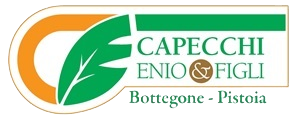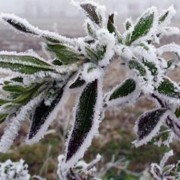The agronomist informs: how to prevent unpleasant frost damages
How to prevent frost damage
In the late autumn season plant-health measures on ornamental plants are reduced to a minimum, in parallel to the biological cycles of pathogenic microorganisms (biological agents responsible for the onset of the disease condition in plants), whether insects or fungi.
In this period, however, you need to pay more attention to the performance of the temperature, planning a rational strategy for preventing the damage caused by frost.
The cold stress felt by ornamental plant, grown in pots or in open fields, it is essentially caused by two types of frost:
- From radiation – determined by the loss of soil heat during the nights with clear skies, low humidity and weak winds. In these conditions the hot air, lighter, tends to move to several meters from the ground level, leaving space for a layer of cold air
- From advection (in meteorology, horizontal transport, by wind, of some properties of the atmosphere (heat, steam, momentum, etc.). – determined by the large cold air moves, usually from northerly winds during the course of the disturbances
The damage caused by frost are caused by cell water which, when the temperature decreases, it solidifies going to affect both the cells themselves and whole plant tissues.
After the thaw, the affected green tissues appear as emptied and undergo desiccation.
Symptoms of frost damage are visible on the various plant organs, and can occur in various ways:
- Redness and browning of the leaves, especially those located in the apical part of the young branches.
- In case of severe frosts the desiccation may involve whole branches, causing browning spread on the foliage.
- The buds are protected by the perule (leaves transformed in a way that they can provide protection to the buds of plants), but in the spring time, or if placed on branches not well lignified, may receive damage, even coming to detach from the plant.
- On the stem may occur swelling of the bark, which can lead to cracks or “peeling”.
What to do to maintain the health and beauty of the plant
In the nursery the plant, receiving the necessary fertilization and irrigation, tends to grow a lot and for longer time, compared to the natural conditions, becoming more sensitive to the symptoms described above. This necessitates some targeted operations dedicated to strengthening or better hardening plant tissues, such as:
- Copper based treatments. Normally designed as fungicides operations, they have also a phytotoxic effect. In response to the treatment, the plant tends to stop his growth and clappers its tissues; in fact it is going to become more resistant to frost.
- Adopt the right fertilizer. In nurseries served by ferti-irrigation, it is necessary to adopt the correct nutrient solutions according to the seasonal trend. In the late spring/early summer period there are used solutions rich in nitrogen, which promote the growth of plants. On the contrary, with the approach of the fall season, it should reduce the concentrations of nitrogen favoring potassium, in order to induce the plant to harden.
- In case of strong forecast and sudden frosts, it is recommended to intervene with specific antiperspirant products, that limit the gas exchange between the plant and the environment, reducing the risk of freezing of the water present in the plant tissues.
Considering that at this time of year the frosts can affect the quality of the nursery product, you must pull the analytical knowledge of the meteorological phenomenon to some technical measures that make the plant more resistant.
For more tips for maintaining your plants healthy and beautiful, we are always at your disposal with an internal agronomist able to meet your needs. Write us, we will respond within 48 hours.



